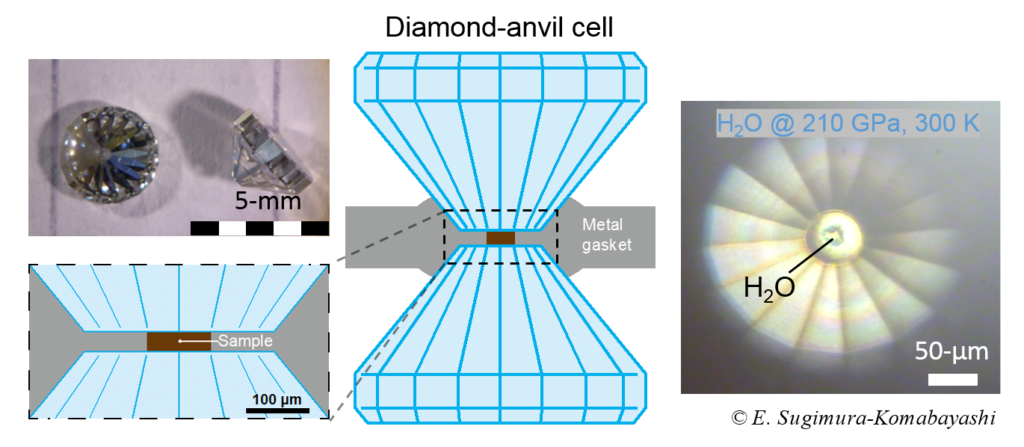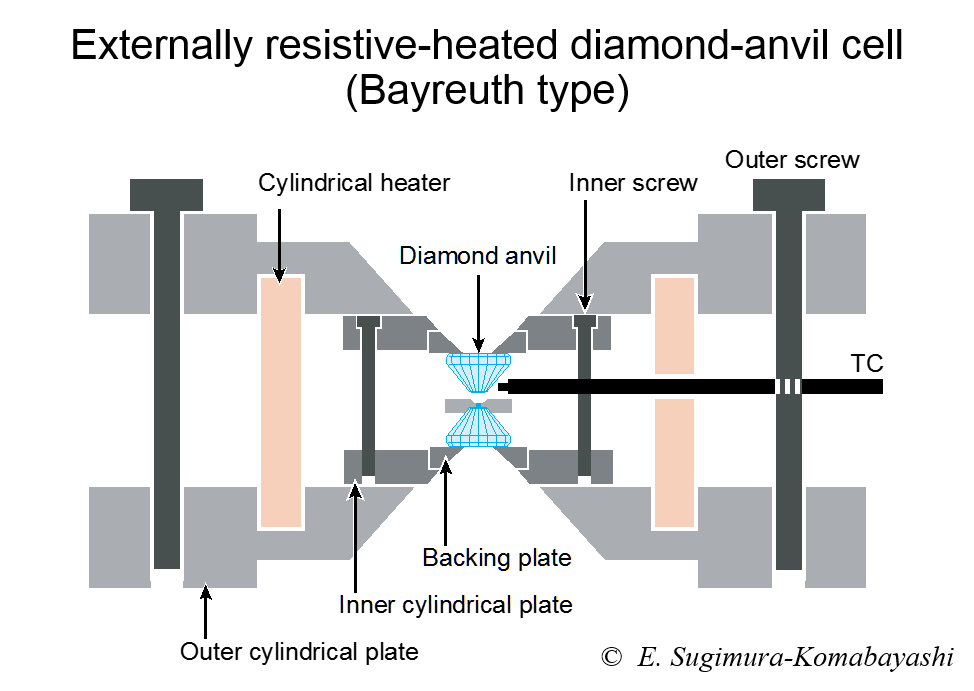NEWDIA4Planet: General Knowledge
What is a diamond-anvil cell?
The diamond-anvil cell (DAC) is a device used for high-pressure generation. It consists of two opposing diamond anvils and a metallic gasket sandwiched between the anvils. Pressure can be applied to a sample placed inside a hole on the gasket by squeezing the anvils together with screws until the sample reaches the intended pressure for its property measurements. The reason for diamond being used in this device is that diamond is the hardest material we can obtain, and its transparency to a wide range of light source brings many in-situ measurements possible. The diamond anvils are also very small so the whole device can be easily transported to facilities such as synchrotron light sources around the world.
High-temperature diamond-anvil cells
A diamond-anvil cell (DAC) can be very useful tool to mimic high-P-T conditions at deep planetary interiors when combined with various heating techniques. One common method is to use a laser. In the laser-heated DAC, a small sample (ca. 100 microns) can be heated to temperature as high as 6000 deg C. However, the laser-heating technique suffers from large temperature uncertainty due to laser fluctuation and large temperature gradient within the sample. Furthermore, the laser-heating DAC is not applicable at temperature below 1000 deg C because the temperature is measured by pyrometry where we capture thermal radiation emitted by the heated sample. Another common heating method is resistive heating. In resistive heating, heat is produced when electric current passes through a heating element, or a heater. Temperature in resitive heating is very stable and does not fluctuate with time as much as laser heating. The resistive heater can be placed either outside (“externally-heated DAC”) or inside (“internaly-heated DAC”) the sample chamber. In externally-heated DAC, a large resistive heater surrounds a sample together with the gasket and the anvils, hence the temperature within the sample is very homogeneous, while the thermocouple placed near the sample gives you very precise and accurate temperature. However, the externally-heated DAC is not suitable for temperature generation above 1000 degC as mechanical parts including the anvils cannot withstand higher temperatures. As for internal heating, a mircon-sized heater is placed inside the sample chamber with thermal insulation layers protecting the anvils from excessive heating, thus the temperature exceeding 5000 degC can be generated. It has been proven that both the laser-heated DAC and the internally-heated DAC are capable of simulating P-T conditions corresponding to the Earth’s inner core, which was the significant milestone in the field of high-pressure experimental mineralogy.
This project has received funding from the European Union’s Horizon 2020 research and innovation programme under the Marie Skłodowska-Curie grant agreement No. 753858.
Copyright Emiko Sugimura-Komabayashi






Recent comments